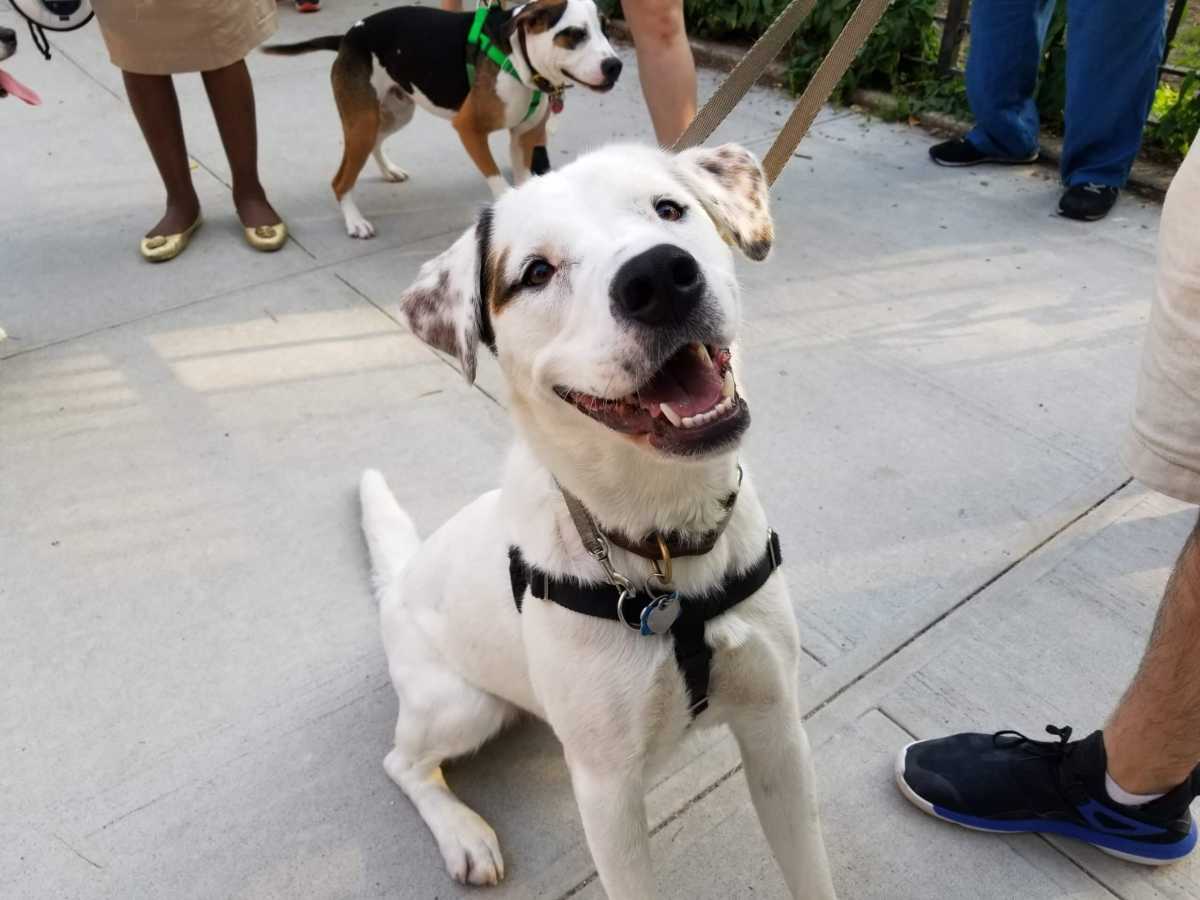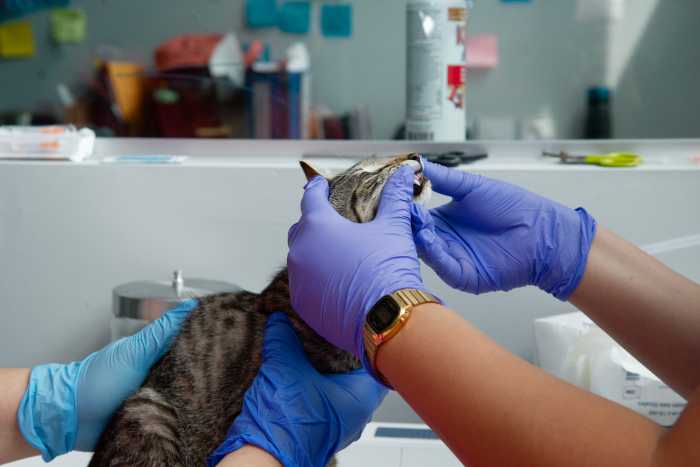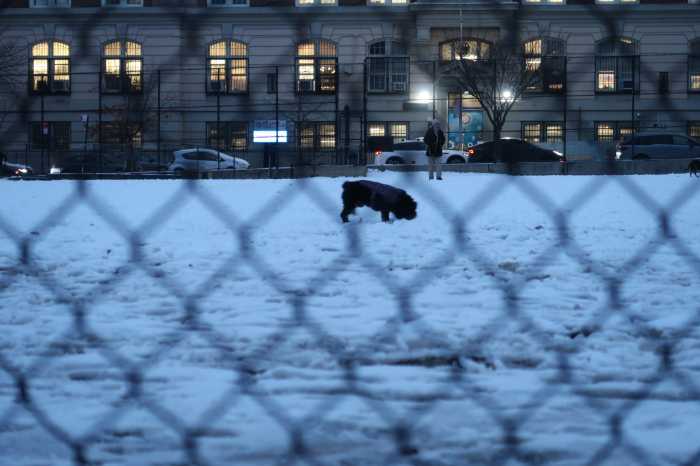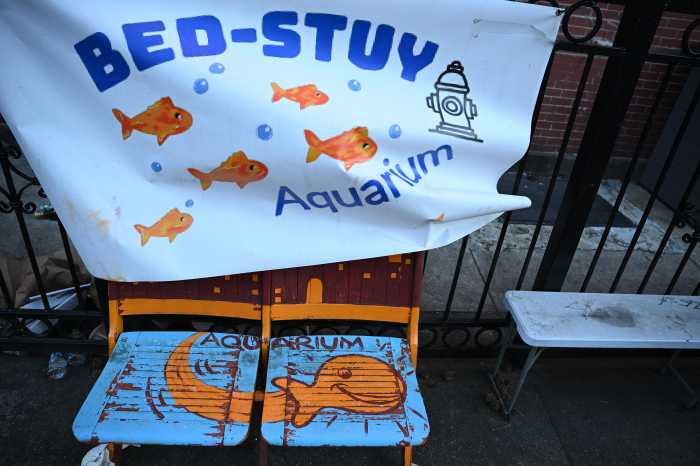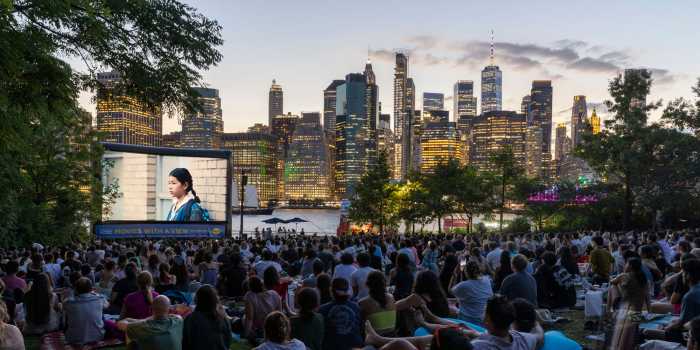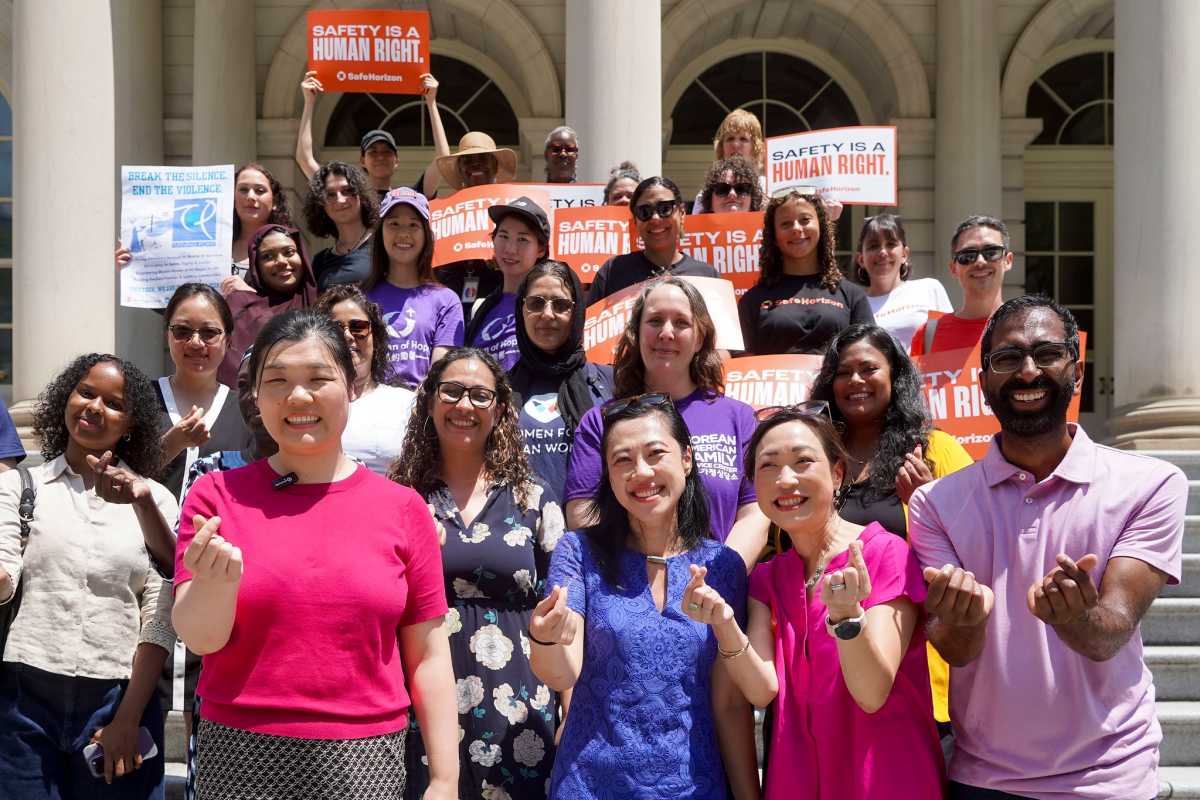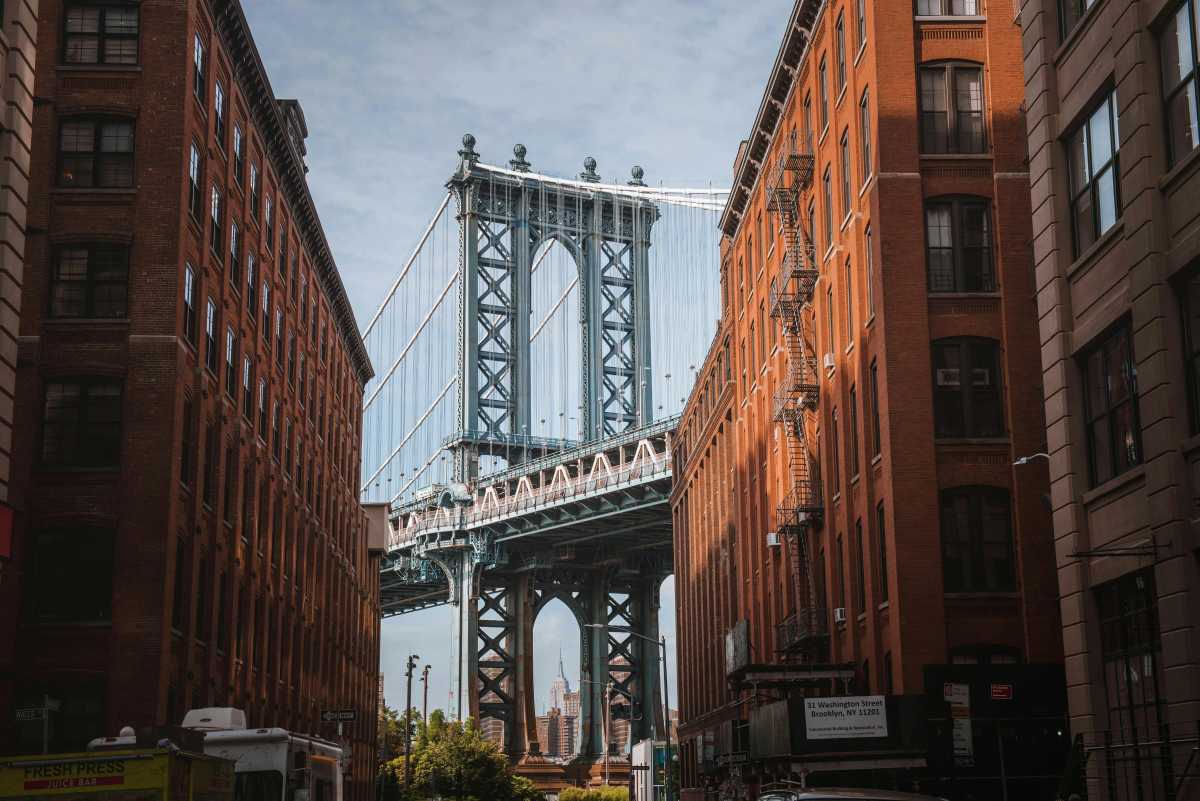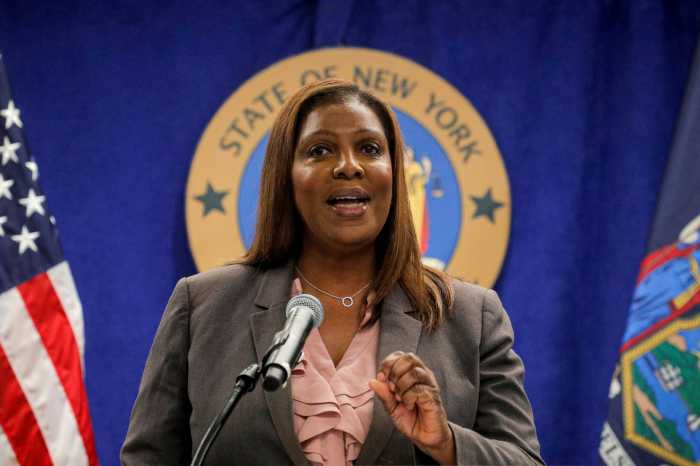They’re getting a ruff deal!
Fort Greene’s furry friends are being locked out of an “unofficial” dog run on Clermont Avenue, and now their owners are asking the city to legitimize the small, fenced-in area used for decades by local doggos.
Human and canine community members gathered at the makeshift pup run near PS 20 on June 21 to call on the city to reopen the space and, hopefully, make it an official Parks Department dog park.
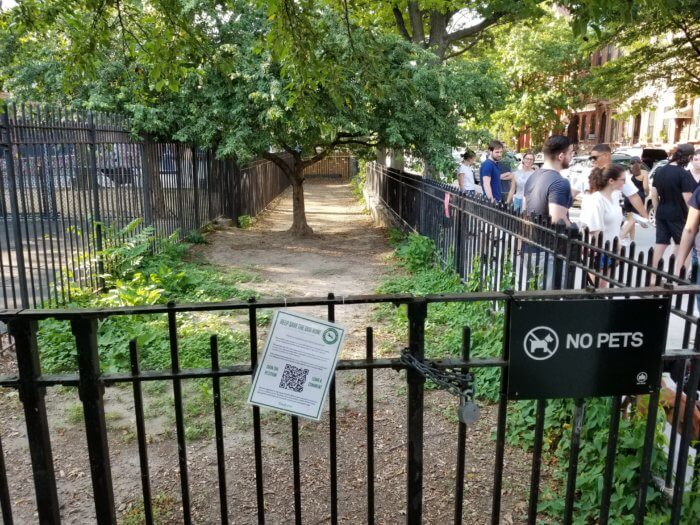
The rally was organized by Fort Greene resident Charles Wallace, who says he was with his dog, Kylo, and fellow resident Natasha Camhi and her dog, Arlo, when he saw a Parks Department employee padlocking the run for reasons unknown last month.
The pair claims it’s not the first time the area has been locked up, but that communication with the city has been difficult, and they’ve still not been able to figure out exactly why it was closed. In addition to the padlock, the city also affixed a sign to the gate barring pets from the space.
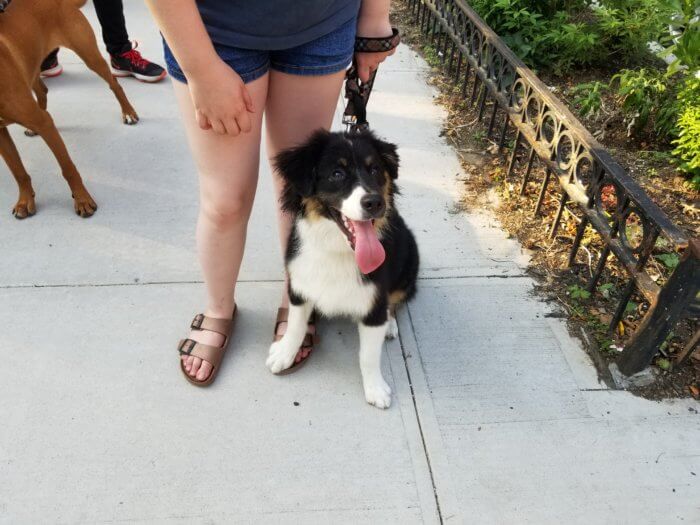
City Council candidate Renee Collymore, who is hoping to represent Fort Greene, blasted the city agency for “disrespecting” the community.
“We want you to know that we were abruptly disrespected not too long ago,” Collymore said Monday, addressing the Parks Department. “These are our neighbors, and these are our children, our dogs. And we love them, just as if you love your own children. What we’re doing today is making sure that the City of New York is aware that we see you. We see what you’ve done to us by taking away our dog run.”
The dog run is a small, elongated patch of land without dog amenities, but residents say it’s been used by the local pooch population for years, at least since the 1990s as far as Wallace is aware. Those who use the space say they also maintain it since the Parks Department doesn’t, and are willing to continue to do so.
“We’re so willing to take care of this space ourselves,” said Camhi. “We don’t need a lot of money from the city. We just want to have it open and have it be a safe space. We have over 300 people who are willing to help out. It’d be very easy to organize. We have volunteer corps ideas, maintenance we need to do. We already have a bench, bowls, it would be so easy to set up.”
It is, however, missing some key features of a typical dog run, such as a double-fenced entrance to prevent puppers from escaping. The residents say they are willing to work with the Parks Department to bring the space up to code.
“There’s hundreds of people who use this thing who are all willing to put some time and effort in,” Wallace told Brooklyn Paper. “We’re just trying to figure out what Parks need from us.”
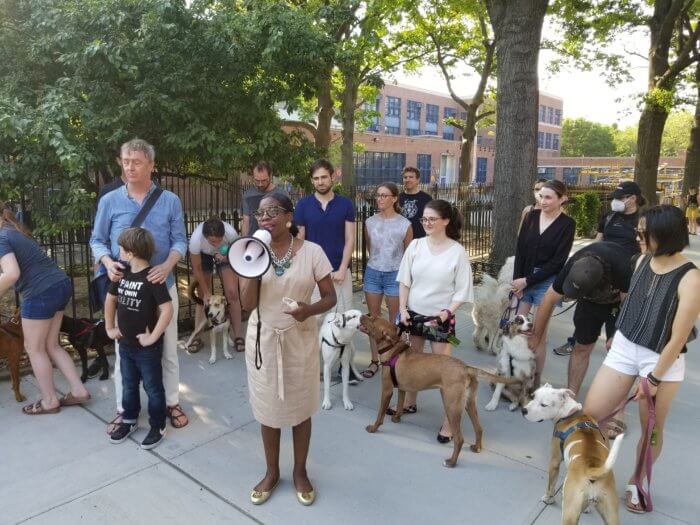
A spokesperson for the Parks Department did not respond to a request for comment.
Those who attended Monday’s rally aren’t alone — residents have started an online petition to save the dog run that, so far, has garnered over 350 signatures.
The loss of the dog run has been hard on both human and dog residents. Some have started using nearby Fort Greene Park during off-leash hours, but those are only early in the morning or late at night, and residents don’t feel the same freedom there as they do within the fenced-in area. And some dogs are not as well-trained as others and cannot be off-leash at all.
“He’s really suffering,” said Wallace, referring to his pup, Kylo. “We used to come here every night, right before dinner at 5:30. He drags me here, they love it, and they’ve got all their friends here.”
For now, four-legged Fort Greeners will have to make do with other options, but they and their humans are hoping for a productive relationship with the city moving forward.
“We want to cooperate with the city,” said Camhi. “It doesn’t need to be antagonistic at all.”


